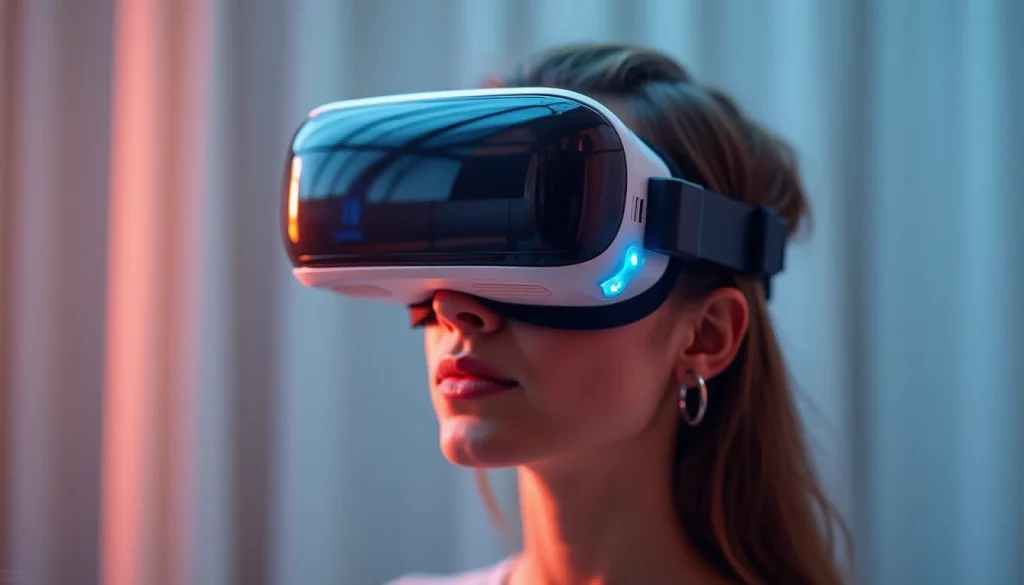Introduction
Virtual reality (VR) has been a buzzword in the gaming industry for several years, with developers and enthusiasts alike eagerly anticipating its widespread adoption. While still in its early stages, VR technology is already beginning to revolutionize the way we experience games, offering unprecedented immersion and interactivity. In this article, we’ll explore how virtual reality is transforming the gaming landscape and shaping the future of play.
The Evolution of Virtual Reality Gaming
VR gaming has come a long way since its inception in the late 1980s with early headsets like the Nintendo Virtual Boy. Today’s VR systems boast advanced technologies such as high-resolution displays, precise motion tracking, and sophisticated haptic feedback, providing gamers with an incredibly realistic and engaging virtual world to explore.
Some of the key milestones in VR gaming history include:
- The Oculus Rift Kickstarter campaign (2012): This crowdfunding success story launched a new era of consumer-focused VR headsets and sparked renewed interest in the technology.
- Sony’s PlayStation VR release (2016): As one of the first major gaming console manufacturers to enter the VR market, Sony brought the immersive experience to millions of living rooms around the world.
- The rise of standalone headsets: Devices like the Oculus Quest and HTC Vive Focus offer wireless, self-contained VR experiences without the need for a powerful PC or external sensors.
The Impact of Virtual Reality on Gaming
VR technology is transforming various aspects of gaming:
- Immersion and presence: By fully immersing players in digital environments, VR headsets create a sense of “presence” that makes users feel as if they’re truly inhabiting another world. This heightened immersion leads to more emotionally engaging and memorable gaming experiences.
- Interactivity and agency: VR allows for greater bodily movement and physical interaction with game elements, giving players a stronger sense of agency and control over their actions within the virtual space.
- Accessibility and inclusivity: By enabling people to explore new environments and experiences in a safe, controlled setting, VR can make gaming more accessible to individuals with physical disabilities or mobility issues.
- New genres and gameplay mechanics: Virtual reality opens up possibilities for entirely new game genres and mechanics that wouldn’t be feasible with traditional flat-screen displays. Examples include room-scale VR titles like Beat Saber, which requires players to physically move around their play space to interact with in-game elements.

The Challenges of Adopting Virtual Reality Gaming
Despite its potential, VR gaming still faces several obstacles:
- Cost: High-end VR headsets and the powerful PCs required to run them can be expensive, putting the technology out of reach for many consumers.
- Motion sickness: Some users experience discomfort or nausea when using VR headsets due to latency issues, mismatched visual and vestibular cues, or the intensity of certain game experiences.
- Space requirements: Many VR games require a significant amount of physical space to play comfortably and safely, which can be challenging in smaller homes or apartments.
- Content availability: While the VR gaming library is growing steadily, there are still far fewer titles available compared to traditional gaming platforms. This lack of content variety may deter some potential adopters.
The Future of Virtual Reality Gaming
As VR technology continues to advance and become more affordable, we can expect to see even greater integration into mainstream gaming:
- Improvements in hardware: Advances in display resolution, field of view, motion tracking precision, and haptic feedback will make VR experiences even more immersive and realistic.
- Enhanced social features: VR platforms are increasingly incorporating social elements like multiplayer modes, avatar customization, and virtual hangout spaces, enabling gamers to interact with friends in new ways.
- Expanded use cases: Beyond gaming, VR is also being explored for applications in education, therapy, filmmaking, and more. As these industries adopt the technology, it will become increasingly accessible and integrated into daily life.
- Standalone and all-in-one solutions: As standalone headsets like the Oculus Quest continue to improve in terms of performance and features, they may eventually replace tethered VR systems altogether, making the experience even more convenient for users.
Conclusion
Virtual reality is already beginning to reshape the gaming industry, offering unprecedented levels of immersion and interactivity. While challenges such as cost, accessibility, and content variety still remain, the future of VR looks bright, with advancements in hardware and software poised to bring the technology into the mainstream.
At Tech Trends Today, we’re excited to watch this exciting field continue to evolve and can’t wait to see what innovative experiences await us on the horizon. Stay tuned for more updates on the latest developments in virtual reality gaming!
